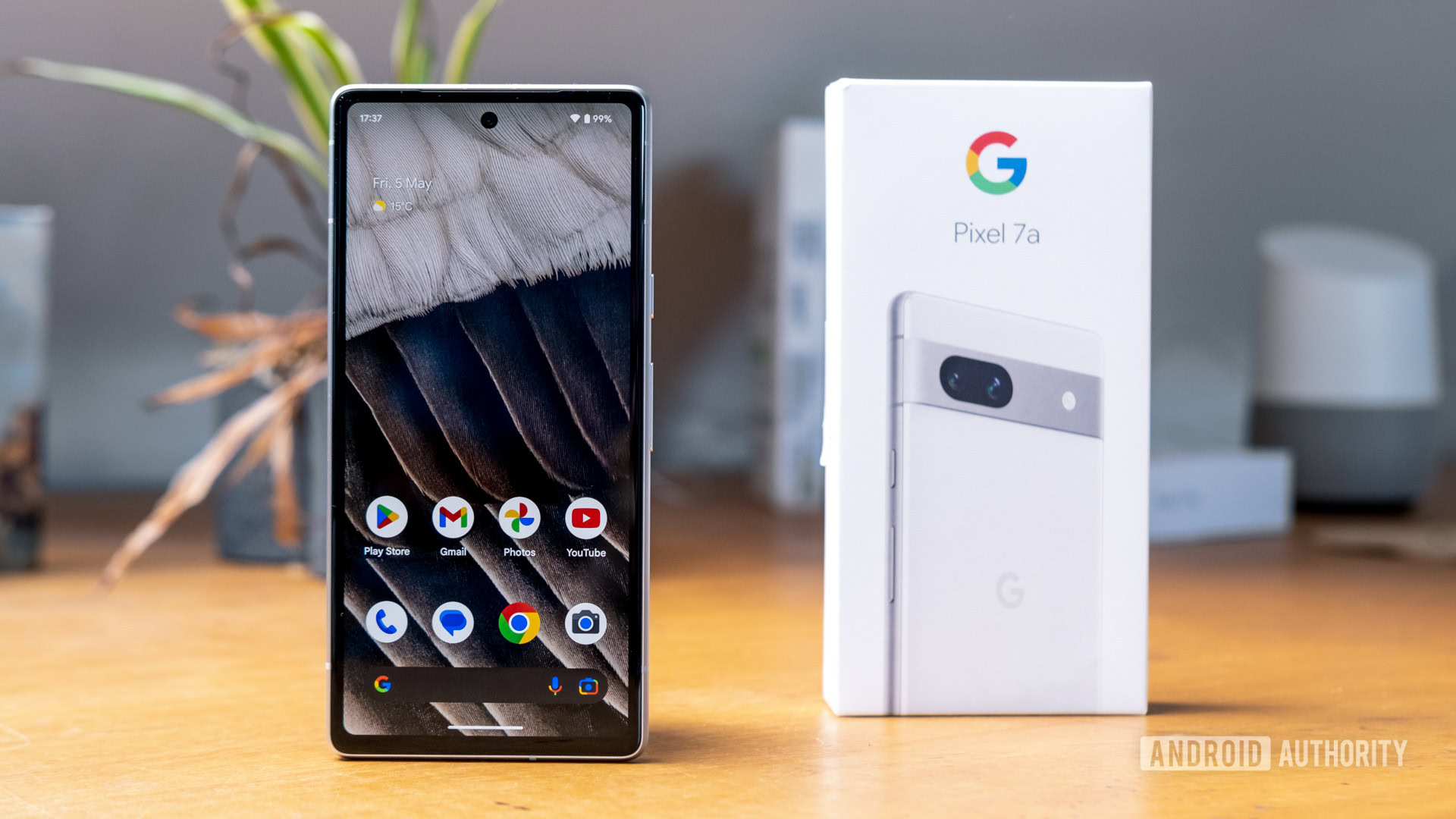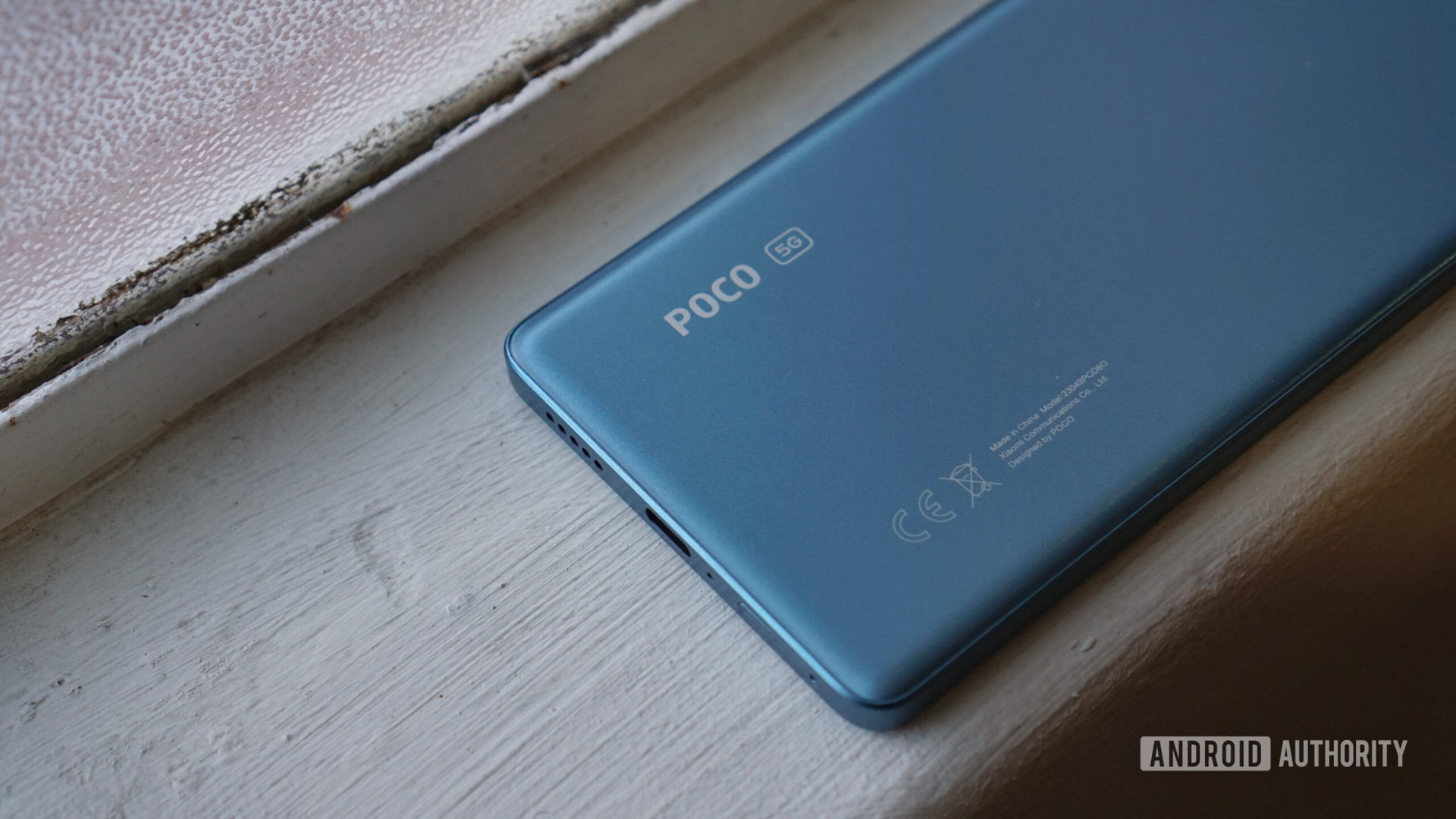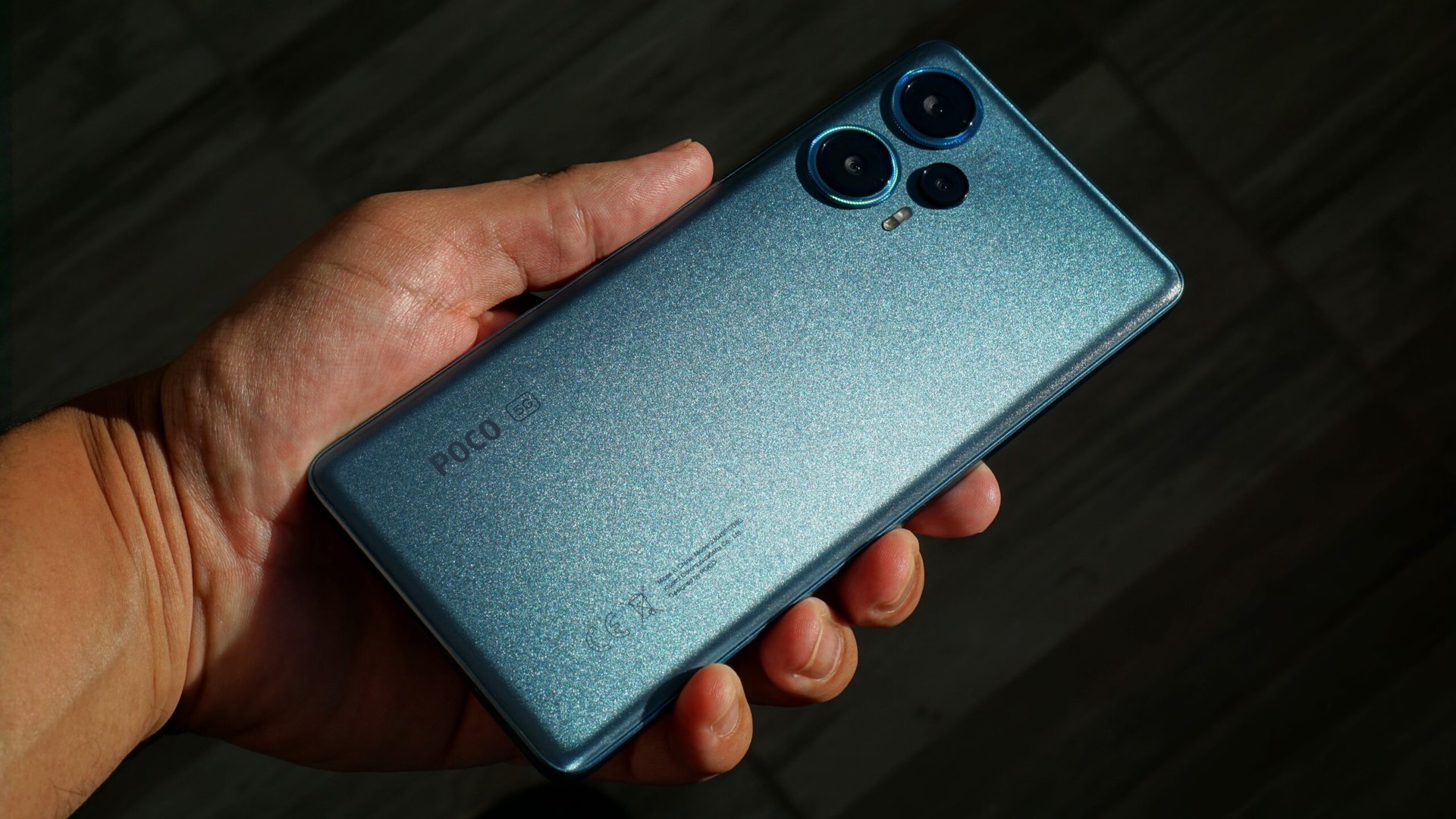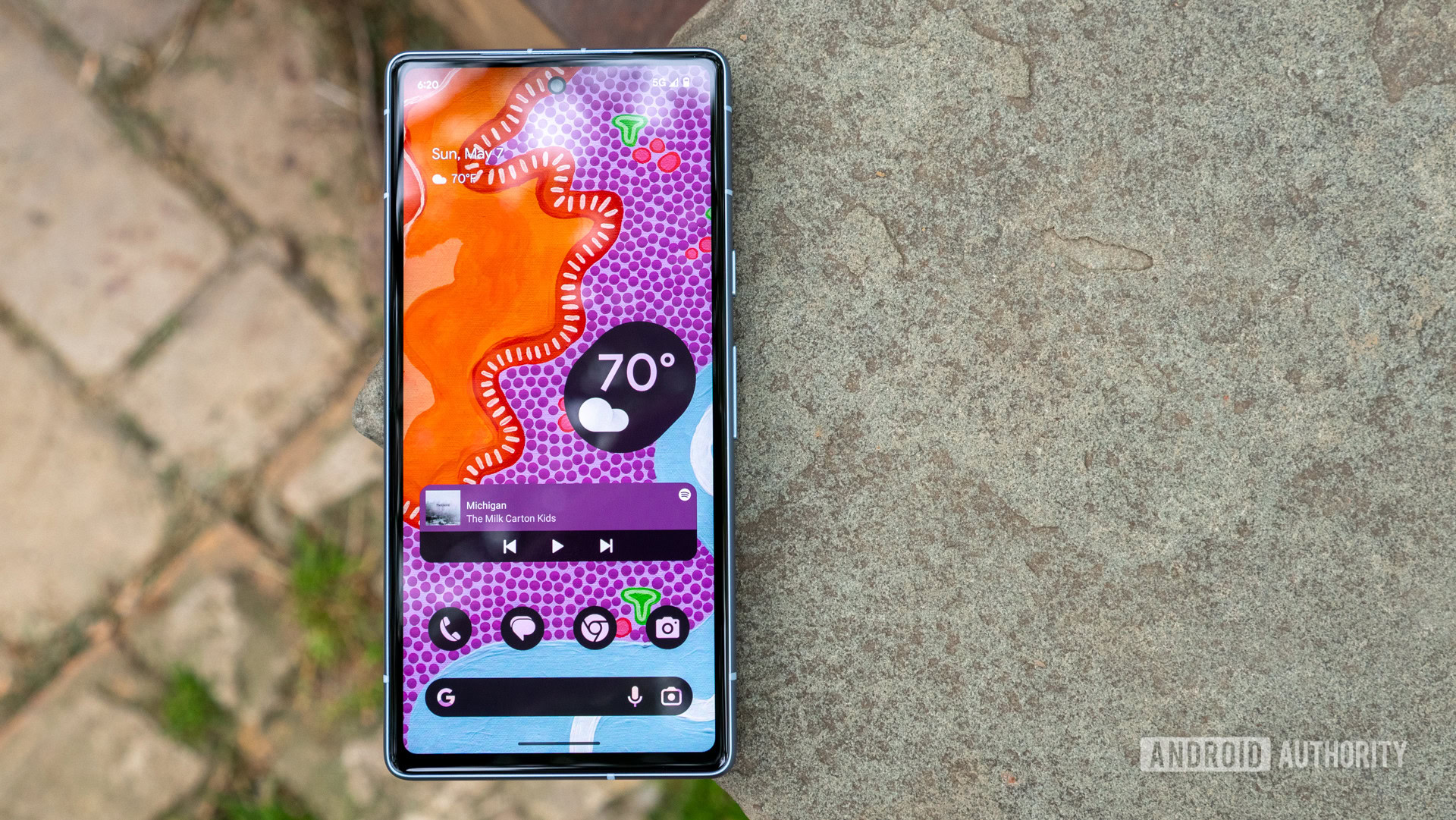The best mid-ranger for gamers isn’t the Pixel 7a

Robert Triggs / Android Authority
The Pixel 7a finally launched a couple of weeks ago, and it looks like one of the more impressive mid-rangers of 2023. For $50 extra compared to the 6a, consumers are getting a high refresh rate screen, wireless charging, more RAM, and a new main camera.
This is in addition to welcome features like long-term update support, the great Pixel camera experience, and some exclusive software features. At its core, the phone also delivers a pretty powerful performance courtesy of the semi-custom Tensor G2, the same processor powering the flagship Pixel 7 series.
Despite these perks, those on the hunt for the best gaming phone performance on a budget might want to keep an eye on another brand-new release that occurred in the same week as the Pixel 7a reveal.
POCO F5 versus Pixel 7a: How do they compare on paper?

Hadlee Simons / Android Authority
The POCO F5 was launched three weeks ago for the great price of €479.90 or £449. (Although an early bird promotion knocked the phone down to €399.90 or £379, we’re going to focus on the full price here.) Unfortunately, the device isn’t officially available in the US, so you’ll need to import it.
The Pixel 7a is sold for $500 in the US, but the better comparison would be European pricing which sets you back €509 or £449. So it’s slightly more expensive than the Poco F5 in mainland Europe but has an identical price tag in the UK.
Each phone has a set of advantages over the other, but for the purposes of gaming, we’re particularly interested in their performance.
Starting with the Google phone, the Pixel 7a’s Tensor G2 chipset consists of a powerful but aging CPU setup (two Cortex-X1, two Cortex-A78, four Cortex-A55) as well as a capable Arm Mali-G710 MC7 GPU. This is all built on a 5nm Samsung process, which isn’t the latest or greatest but should still make for a relatively efficient design.
Meanwhile, the POCO F5 is the first global phone with a Snapdragon 7 Plus Gen 2 processor. This is effectively a “lite” version of the Snapdragon 8 Plus Gen 1, offering a powerful CPU (one Cortex-X2, three Cortex-A710, and four Cortex-A510) and an unnamed Adreno GPU (purportedly the Adreno 725). This all comes together on a 4nm TSMC process, the smallest and most efficient manufacturing node right now. So what does this mean in practice?
Pixel 7a vs POCO F5: CPU and GPU benchmark
For starters, GeekBench 5 gives us a good idea of what to expect in terms of CPU power, and the POCO F5 only just edges out the Pixel 7a’s Tensor G2 when it comes to single-core scores. Multi-core workloads are another matter though, as the Snapdragon’s newer cores presumably come into effect here to deliver a score that’s over 20% higher than the Tensor G2. Either way, a faster CPU should result in improved performance for launching apps, better performance in games that are CPU-focused, and a more responsive overall experience.
It’s also interesting to see the POCO F5 beating the Snapdragon 8 Gen 1 inside the Samsung Galaxy S22 Ultra here, potentially showing us just what a difference the switch from Samsung to TSMC manufacturing can make, in concert with other architectural tweaks.
The Pixel 7a generally trails the POCO F5 in CPU and GPU testing, but it still delivers good performance for the price.
Meanwhile, PCMark’s Work 3.0 benchmark gives these phones a good system-level workout. And we see a healthy advantage for the POCO handset, as the Snapdragon 7 Plus Gen 2 phone is much closer to the likes of the Galaxy S22 Ultra than the Pixel 7a. It’s worth mentioning benchmarks like these test more than just the processor, putting memory, storage, and other elements under strain as well. The test, therefore, suggests that the POCO device’s performance is down to more than just the processor.
CPU and system-level benchmarks are well and good, but the GPU is usually where mid-rangers tend to falter compared to flagships. So we pitted the POCO F5 and Pixel 7a against each other in classic GPU benchmarks. These were 3DMark Wild Life, GFXBench’s Aztec Ruins (OpenGL and Vulkan), and GFXBench’s Manhattan 3.0 offscreen. The results show a small performance gap between the POCO F5 and Pixel 7a in favor of the Xiaomi handset, varying from a ~6.6% lead to 14.1%. These phones indeed fail to threaten last year’s flagships in the classic Wild Life test in particular, but both still turn in impressive results for mid-rangers.
Interestingly, neither phone’s performance in GFXBench matched their respective display refresh rates across the board. Both phones only achieved performance in line with or surpassing their refresh rates once (in the Manhattan test). In fact, Google’s decision to stick with a 90Hz refresh rate means that it’s a little closer to reaching its target.
One-off benchmarks are one thing, but consistent performance is another challenge altogether. The 3DMark Wild Life Stress Test gives us a good idea of what to expect under a sustained workload akin to a gaming session.
Here, the POCO F5 immediately starts with a healthy advantage, only dipping by an appreciable amount in the penultimate run before another major dip occurs. In fact, the phone was extremely close to passing the rapidly declining Samsung Galaxy S23 by run 19 before major thermal throttling kicked in. The POCO F5 ultimately yielded a final score of 6,427 points and 84.6% stability, beating the Galaxy S22 Ultra. That’s still pretty impressive, but the fact that a mid-ranger was that close to beating a major 2023 flagship is a feat in itself.
The POCO F5 also emerges the victor under stress testing, hinting at better performance during extensive bouts of gaming.
On the other hand, the Pixel 7a starts on the back foot and it only takes until the third run to see a notable drop. Ultimately, the phone was only able to maintain 63.6% stability and a final score of 4,217 points, landing way behind the POCO F5. If it’s any consolation, the Pixel 7a ended things pretty close to the Galaxy S22 Ultra.
Either way, the stress test suggests that the POCO F5 will maintain a far more stable frame rate than the Pixel 7a during long gaming sessions. But Google’s mid-ranger still performs very admirably, dropping scores by a much smaller degree than Samsung’s 2022 and 2023 flagships and ending up within touching distance of one of them. And that’s nothing to scoff at by any measure.
Other reasons why the POCO F5 is great for gamers

Hadlee Simons / Android Authority
The Wild Life Stress Test in particular gives us a good idea of how the two phones fare in terms of sustained performance, but there are a few more reasons I think you should consider the POCO device if you’re a gamer.
For one, it comes with 256GB of storage in the base model compared to the Pixel 7a’s 128GB allotment. This is especially handy in today’s era of multi-gigabyte downloads and updates, with games like Genshin Impact weighing in at over 10GB.
Double the storage, more battery, and faster charging make the POCO F5 a great all-around midrange gaming phone.
Otherwise, POCO’s handset also delivers handy perks like a 3.5mm port, a larger battery (5,000mAh versus 4,385mAh), and much faster charging (67W versus 18W). The headphone jack isn’t necessarily a must for gamers, but it does allow for low-latency audio and more audio options. The rest are must-haves if you plan to spend a couple of hours gaming every day.
It’s also worth noting that Snapdragon chips used to be the chipset brand of choice for gaming. There isn’t much to choose between Snapdragon and other big-name Android chip brands when it comes to gaming nowadays. Emulation can be an exception, though. For example, the developer behind the AetherSX2 emulator for Android noted in 2022 that devices with PowerVR or Mali graphics (like the Pixel 7a) had lower performance than devices with Snapdragon Adreno GPUs.
Not a gamer? The Pixel 7a is for you

Ryan Haines / Android Authority
POCO clearly brings a lot to the table with the F5 if you value performance and gaming above all else, though the Pixel 7a isn’t far behind by any measure. But what if you don’t care about playing games?
Well, we think the Pixel 7a has a host of features that make it the better all-around purchase for many people. It offers an IP67 rating versus the F5’s paltry IP53 rating, wireless charging, superior camera quality for the most part, some exclusive Pixel software features, and a much longer software update pledge. Then again, it’s not quite a slam dunk, as the POCO F5’s bigger battery and much faster charging aren’t just perks for gamers.
Still, if you’re after the most performance for your buck and want to play demanding games down the line, both phones do a good job, but the POCO F5 is, surprisingly, the winner here.

Google Pixel 7a
The best sub-$500 camera phone
Solid performance and plenty of RAM
Improved 90Hz display
For all the latest Technology News Click Here
For the latest news and updates, follow us on Google News.

